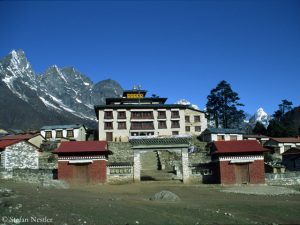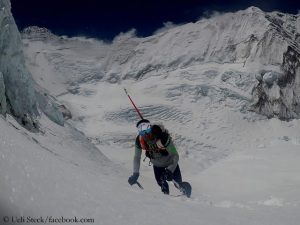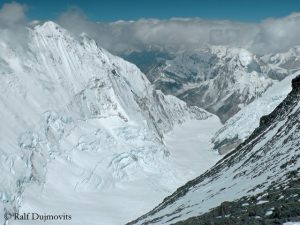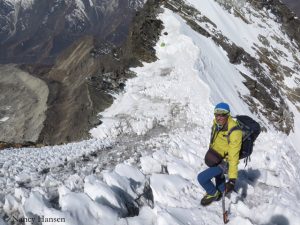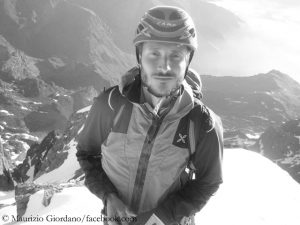Ueli Steck cremated at Tengboche Monastery
He would have liked that. At Tengboche Monastery in the Khumbu area, at almost 4,000 meters, with a view to Mount Everest, Lhotse and Ama Dablam, Ueli Steck’s family bid farewell to the Swiss top climber during a Buddhist ceremony. The 40-year-old had fallen to death on Sunday on the 7861- meter-high Nuptse. “According to the Nepali tradition, the deceased was cremated in an impressive three-hour ceremony,” Steck’s family informed via Facebook. Uelis wife Nicole, his parents and parents-in-law took part. “The family perceived the ceremony as very solemn and impressive, sad and at the same time liberating.” The family will take a part of the ashes back to Switzerland, where a public memorial is planned for friends, acquaintances and companions. Place and time are not yet fixed. On Ueli Steck’ homepage an online book of condolence was established.
Acclimatization plan changed at short notice
The family also commented on the accident. Last Saturday, Steck had ascended to Camp 2 at 6,400 meters. “His original plan was to climb the next day via the Everest normal route up to the almost 8,000-meter-high South Col for further acclimatization. From Camp 2, Ueli found that the conditions in the Nuptse face were ideal. Therefore he decided in the evening to climb up on Nuptse and not to the South Col the following day.”
Steck set off from Camp 2 on Sunday at 4:30 a.m. local time along with the Frenchman Yannick Graziani. While Graziani continued on the Everest normal route, Ueli turned towards Nuptse. “Ueli’s accident happened at around 7,600 meters at about 9.00 a.m. (local time),” said Steck’s family. “His body was finally recovered by the Italian helicopter pilot Maurizio Folini at an altitude of about 6,600 meters and flown to a hospital in Kathmandu. The cause of the fall is still unknown.”
Where exactly did Steck ascend?
The fatal accident is also being discussed among the mountaineers on the north side of Everest. Ralf Dujmovits, who – as reported – will try this spring for the eighth and, as he says, last time to scale the highest mountain in the world without bottled oxygen, was staying on the North Col at 7,000 meters for acclimatization, when he heard that Steck had died on Nuptse: “His death has touched me very much – I am profoundly saddened.” In September 1996, the now 55-year old German had succeeded, along with Axel Schlönvogt, the second ascent of the route via the Nuptse North Ridge, opened by an British expedition led by Doug Scott in 1979, which meanwhile, in Dujmovits’ words, “has unfortunately degenerated to a kind of normal route”: “I don’t know if Ueli wanted to take this route, which is now often secured with fixed ropes during the pre-monsoon period. It seems a little Ueli-unlike,” Ralf writes to me. “In 2003, the Benegas brothers from Argentina first climbed a very beautiful route (named ‘The Crystal Snake) on the right side (i.e. west) of the pillar. That would conform more to Ueli’s style. Or was he exploring a new route even further to the west?” In the end, says Dujmovits, he can only speculate. Steck had announced that he would try to traverse Everest and Lhotse, but he had a permit for Nuptse too.
Dujmovits: “One of the strongest allrounders”
“I have experienced Ueli always very down-to-earth, lively, honest and friendly,” Ralf writes about Steck. “He was one of the strongest all-round climbers of our time, who has raised both mountain sports-specific training and professionalism to a new level. I was disappointed about his dealing with the avalanche accident in 2014 on Shishapangma. Admitting mistakes to the public as well as to a companion would certainly have given him even more splendor.”



